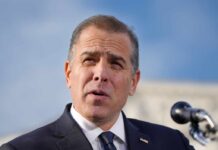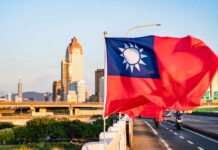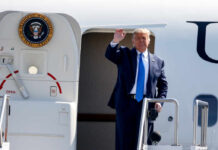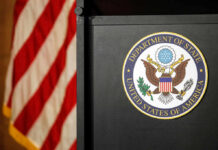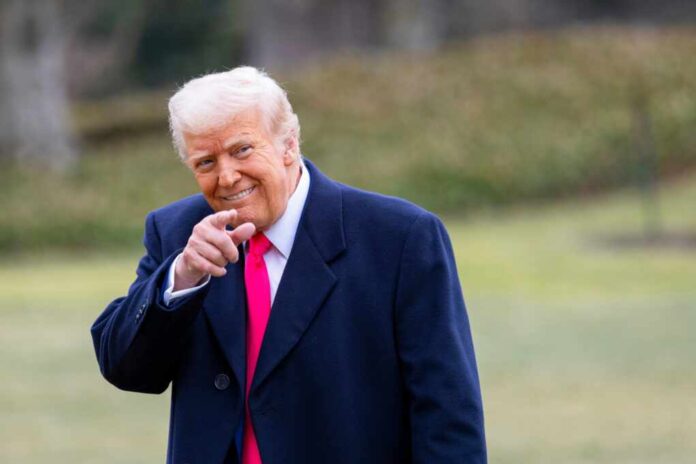
President Trump demands free passage for US ships through vital global canals, reasserting American interests in strategic waterways built with American ingenuity and resources.
At a Glance
- President Trump has directed that American military and commercial ships should travel through the Panama and Suez Canals without paying fees
- Trump tasked Secretary of State Marco Rubio to “immediately take care of” this situation, citing America’s historical role in creating these waterways
- The initiative comes amid growing concerns about Chinese influence around the Panama Canal, which handles over 40% of US maritime trade
- Defense Secretary Pete Hegseth announced a new agreement allowing US warships to travel “first and free” through the Panama Canal
- The administration views both canals as vital to American economic and national security interests
Reclaiming America’s Maritime Rights
President Donald Trump has launched a bold initiative to eliminate transit fees for American military and commercial vessels using the Panama and Suez Canals. The president asserted that these critical maritime passages would not exist without American vision, engineering, and resources. This directive aligns with his broader America First approach to international relations and trade policy, emphasizing the protection of US economic and security interests on the global stage. Secretary of State Marco Rubio has been instructed to establish formal policy frameworks securing these passage rights for American vessels.
The initiative has already yielded results, with Defense Secretary Pete Hegseth announcing a new agreement between the United States and Panama. This deal ensures US warships and auxiliary vessels will have priority passage through the Panama Canal without fees. The arrangement represents an important victory for the administration’s efforts to secure America’s strategic interests and maintain unfettered access to vital shipping lanes connecting the Atlantic and Pacific Oceans.
Strategic Concerns: China’s Growing Influence
Trump’s canal initiative comes amid escalating concerns about China’s expanding economic footprint in Panama. In recent years, Beijing has invested heavily in infrastructure projects surrounding the Panama Canal, which handles more than 40% of US maritime trade between the Atlantic and Pacific. The administration views these developments as potential threats to American shipping interests and national security. Strategic planners have expressed alarm that Chinese influence could eventually restrict US naval mobility through this crucial waterway.
Secretary Rubio has already made significant diplomatic progress in countering Chinese influence. Reports indicate he successfully persuaded Panama to withdraw from China’s Belt and Road Initiative, preventing deeper economic entanglement with Beijing. This diplomatic victory represents an important step in limiting Chinese economic leverage over the canal’s operations. The US Southern Command has also prepared contingency plans to ensure continued American access to the waterway under various scenarios.
⚡️Panama withdraws from China's Belt & Road Initiative after visit from Marco Rubio, reducing China's influence in the Canal.
⚡️Panama grants U.S. Navy ships FREE passage through the Panama Canal.
⚡️Panama terminates its canal deal with China.
Rubio delivered a message from US… pic.twitter.com/x7roP6EKkV
— Indo-Pacific News – Geo-Politics & Defense (@IndoPac_Info) February 3, 2025
Historical Context and Legal Framework
The American claim to special status regarding the Panama Canal is rooted in history. The United States completed construction of the canal in 1914 after a decade-long engineering feat that transformed global shipping. America maintained sovereignty over the Canal Zone until 1999, when control was transferred to Panama under treaties negotiated during the Carter administration. However, these agreements included provisions guaranteeing the canal’s neutrality and American defense rights that remain in force today.
The Neutrality Treaty specifically grants the United States and Panama the right to defend the canal, with provisions allowing unilateral action when necessary. This legal framework potentially supports Trump’s assertion of American interests in the waterway. While the administration has outlined various approaches to securing its objectives, ranging from diplomatic negotiations to contingency military planning, officials emphasize that cooperation with Panama remains the preferred path forward to ensure American vessels can transit these vital waterways efficiently.
Trump’s initiative extends beyond Panama to include the Suez Canal, which connects the Mediterranean Sea to the Red Sea. Though the United States did not build this waterway, American military and economic power has played a crucial role in maintaining its security and operations for decades. Together, these two canals represent critical arteries for global commerce and military mobility that the administration views as essential to American prosperity and security in an increasingly competitive international environment.






